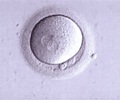A new “pulsed ultrasound technique” that can remotely stimulate brain circuit activity has been developed by neuroscientists at Arizona State University. This new technique works without any requirement for exogenous proteins or even medical devices that are surgically implanted for a similar purpose.
The new study provides insights into how low-power ultrasound can be harnessed for the noninvasive neurostimulation of brain circuits and offers the potential for new treatments of brain disorders and diseases, like traumatic stress disorders, traumatic brain injury and even Alzheimer's disease."We were able to unravel how ultrasound can stimulate the electrical activity of neurons by optically monitoring the activity of neuronal circuits, while we simultaneously propagated low-intensity, low-frequency ultrasound through brain tissues," said lead investigator William "Jamie" Tyler.
The researchers discovered that remotely delivered low intensity, low frequency ultrasound (LILFU) increased the activity of voltage-gated sodium and calcium channels in a way sufficient to trigger action potentials and the release of neurotransmitter from synapses.
As the processes are important for transferring information among neurons, the researchers suggested that this type of ultrasound provides a powerful new tool for modulating the activity of neural circuits.
"Many of the stimulation methods used by neuroscientists require the use and implantation of stimulating electrodes, requiring direct contact with nervous tissue or the introduction of exogenous proteins, such as those used for the light-activation of neurons," explained Tyler.
In their search for new types of noninvasive neurostimulation methods, the scientists revisited ultrasound.
Advertisement
The skull has been a stumbling block to using ultrasound noninvasively in the brain. However, they found that low-frequency ultrasound could be focused through human skulls.
Advertisement
"Obviously, we need to conduct further research and development, but one of the most exhilarating prospects is that low intensity, low frequency ultrasound permits deep-brain stimulation procedures without requiring exogenous proteins or surgically implanted medical devices."
The study is published in the latest issue of the journal Public Library of Science (PLoS) One.
Source-ANI
TAN/L















